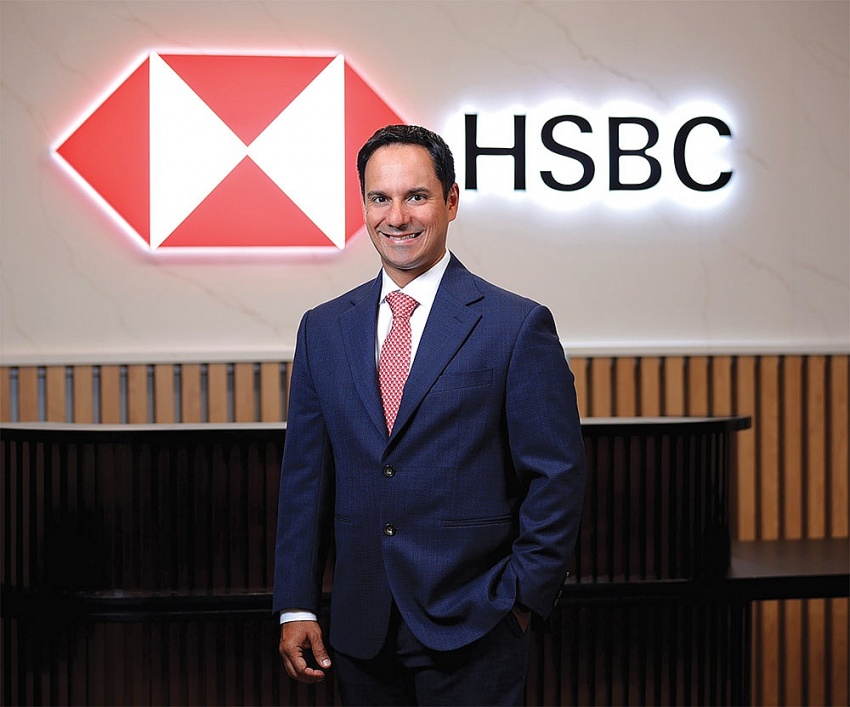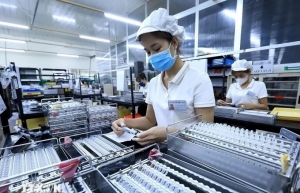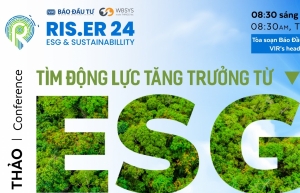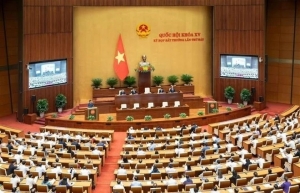Vietnam well-placed to benefit from shifting FDI
How does the trend of supply chain diversification from China to Southeast Asia and countries like India and Mexico affect Vietnam?
The global investment landscape is increasingly characterised by the diversification of supply chains. Initially, we saw a shift from China to Southeast Asia. Now, there is a trend towards diversifying even further from Southeast Asia to other key markets like India and Mexico. Additionally, countries are intensifying efforts to retain manufacturing and investment domestically through various tax incentives, leading to a trend towards localisation.
Despite these shifts, regions such as Vietnam and Southeast Asia continue to offer attractive conditions for foreign direct investment (FDI). The strong infrastructure for FDI, favourable demographics, growing GDP, and consumption levels, coupled with a young, tech-savvy, and relatively competitive skilled workforce, make these regions compelling. The three trade agreements we discussed also enhance the attractiveness.
While there is a trend towards further diversification, I don’t believe it will have a materially negative impact on South and Southeast Asia, or Vietnam.
 |
| Ahmed Yeganeh, head of Wholesale Banking at HSBC Vietnam |
Could you elaborate on the opportunities and strategies for green-focused foreign-invested projects in Vietnam?
The landscape for greenfield FDI in ASEAN continues to be very promising. ASEAN countries not only compete among themselves but also with global players like Denmark, the US, and China.
For instance, Malaysia has been a significant beneficiary of FDI, while Singapore serves as a key regional financial hub. Vietnam stands out due to its resilience and effective management of international relations, which allows it to attract FDI from both Chinese and western sources. It also boasts the highest number of free trade agreements globally, a youthful demographic, and labour costs that remain competitive compared to China. These attributes make Vietnam an attractive destination for FDI.
Regarding focus areas for investment related to climate change, there is emphasis on edtech and adaptation technology. The former aims to mitigate the impacts of climate change, whereas the latter explores adjustments to these changes.
Emerging technologies, like e-vehicles and hydrogen, are in early stages but hold promise for significant future impacts.
With the economic slowdown in China, how do you assess the risk to ASEAN’s asset and economic growth this year and possibly in the future?
The slowdown in China has indeed been significant over the last two years, although its GDP continues to grow faster than that of the US and Europe. Despite this slowdown, we haven’t seen a corresponding decrease in FDI in Vietnam or ASEAN. In fact, FDI has continued to increase.
If interest rates in the west decrease, it could reopen economic markets like the US and Europe, which would create more opportunities for export-focused economies like Vietnam. Vietnam has adeptly managed its relationships with both the east and the west. This balancing act has been crucial, especially in maintaining strong relations with both the US and China.
What actions should the government take to attract more foreign investment, especially considering the new global minimum corporate tax?
Continuing to support rapid decision-making for businesses is crucial. Despite the global minimum corporate tax, our clients feel relatively comfortable due to the effective dialogue the government maintains with key companies.
The government’s proactive engagement in discussions with industry, as seen in conferences and feedback sessions with the prime minister, is particularly beneficial.
In HSBC’s assessment, Vietnam still lags behind in labour productivity compared to other Southeast Asian markets. Given the Vietnamese government’s ambition to move up in the value-added supply chain, what is your perspective on this issue?
Vietnam aims to transition from lower-end to higher-end supply chain roles, focusing on enhancing skills through education and foreign expertise. This investment in is crucial for labour productivity.
Ensuring knowledge transfer from foreign companies to local businesses is vital, as retaining this knowledge within Vietnam is essential for sustainable development. Although intellectual property rights may limit tech transfer, the conveyance of skills is key. This skills infusion is instrumental in fortifying Vietnam’s legal infrastructure, which, in turn, can catalyse a rise in labour productivity.
 | FDI flows strongly into manufacturing, real estate Vietnam’s industrial real estate industry is expected to continue its strong growth trajectory due to foreign direct investment (FDI) inflows benefiting from tax incentives. |
 | ESG poses challenges for Vietnamese businesses in global trade expansion According to the Corporate Global Trade Survey Report 2023 published by Reuters, 88 per cent of businesses require annual environmental, social, and governance (ESG) data collection from their suppliers. This poses a new challenge for Vietnamese businesses in the process of global supply chain integration. |
 | Upcoming NA bears extra significance with elections The National Assembly is set to elect the country’s new state president and the legislature’s chairman this month, following leaders stepping down from the posts. |
What the stars mean:
★ Poor ★ ★ Promising ★★★ Good ★★★★ Very good ★★★★★ Exceptional
 Tag:
Tag:
Related Contents
Latest News
More News
- Global partnerships key to Vietnam’s IFC development (December 26, 2025 | 16:18)
- Vingroup pulls out of bid to invest in North-South high-speed railway (December 26, 2025 | 11:42)
- Strengthening supply chains through trade promotions and customs reform (December 24, 2025 | 14:00)
- PM orders investment model for North–South high-speed rail (December 22, 2025 | 17:43)
- LS Eco Energy to invest in Vietnam rare earth sector (December 22, 2025 | 17:31)
- Government moves to establish International Financial Centre (December 21, 2025 | 21:00)
- Vietnam's IFC to target global investment flows (December 21, 2025 | 18:00)
- Two national hospitals expand capacity with new facilities (December 20, 2025 | 09:00)
- Ha Tinh breaks ground on major Vingroup industrial and energy projects (December 19, 2025 | 18:24)
- EVN launches major power infrastructure projects nationwide (December 19, 2025 | 18:17)






















 Mobile Version
Mobile Version